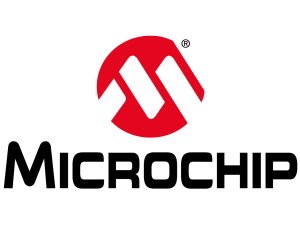8-bit Microcontrollers Still Anchor the Majority of Embedded Designs Today
Author: Greg Robinson, Microchip

They are tiny, but vitally important. The market for 8-bit microcontrollers continues to grow strongly as a key part of the drive to digitalisation, highlighted by the current chip shortages. 8-bit devices are used in all kinds of applications, some in traditional spaces but more frequently next to 32-bit MCU-based systems for offloading certain tasks and freeing up the higher-level processors as well as increasing power efficiency.
The underlying annual growth of 4 to 5% for these devices is encouraging significant investment in new products and new process technologies. Innovation in analog and Core Independent Peripherals are improving the performance of these chips, bringing the controllers into use in many more applications without increasing their complexity.
But this means continuity of supply can be an issue. Many 8-bit microcontrollers are often built on legacy silicon process technologies which are also facing increasing demand. Microchip has an advantage in the market as it makes its chips in their own fabs in Tempe, Arizona; Gresham, Oregon; and Colorado Springs, Colorado. This gives greater control over the supply and allows capacity to be adjusted to meet customer needs.
Owning the factories also allows Microchip to better support their customer-driven obsolescence practice. This practice enables customers to buy parts for as long as they need them and for as long as all sub-materials are available to Microchip.
The innovation with on-chip analog and Core Independent Peripherals allows custom, user-designed functions to be implemented in the periphery while the 8-bit core handles other functions or stays in sleep mode. This is increasingly important for all kinds of safety applications, monitoring systems for critical events to ensure proper operation and function.
The growth in 8-bit devices for system management, monitoring voltage and temperature or adding filtering in sensors is seeing tremendous growth. Adding a tiny controller with a few pins to a board to provide monitoring is an increasingly popular design approach, avoiding the need for a complex re-design of a board.
A key example of this is the multi-voltage I/O (MVIO) on the AVR DD family that helps reduce the board footprint. Integrating the logic level shifter into the chip to support both 5V and 1.8V power avoids an external discrete device. While that external level shifter only costs a few cents, the 8-bit microcontroller may give a 10% cost saving in the bill of materials, reduce the component count (and supply chain complexity) and reduce the complexity of the board design. In the development of consumer and automotive applications, reducing supply chain and board complexity is a very important goal.
In a larger PCB with a 32-bit microcontroller, for example in industrial or data centre designs, adding small 8-bit microcontrollers around the board is an easy way to monitor temperature, voltage and current. Their on-chip I2C interfaces feed information into the main system controller to give more visibility of the performance of the board, boosting the reliability.
Similarly, the Analog to Digital Converter with Computation (ADCC) blocks in the latest devices reduce the need for external filtering components. Adding processing to the ADCC allows independent averaging of signals to produce a higher quality result in less board area.
All these factors are driving Microchip to invest in all three fabs for its AVR and PIC 8-bit microcontrollers as well as the in-house assembly in Thailand and test in Thailand and the Philippines. This control over the whole supply chain helps avoid the challenges of third-party assembly and test houses.
Microchip continues to invest in both the PIC and AVR microcontroller cores, and many new features and innovations on both architectures. There are synergies in the design side, sharing peripherals and process technologies, so some of the peripherals from the AVR family can go into the PIC family and some can go from PIC to AVR. Developers who have experience with one or the other cores allows them to choose the appropriate architecture for the application and the tools they are comfortable using. For example, an AVR might be better suited to protocol stacks in communications systems, while the PIC devices may be better in low level I/O applications.
The two families are brought together with the ecosystem of development tools to simplify the designs with 8-bit devices. The MPLAB X and MPLAB Xpress Integrated Development Environments (IDEs), as well as the MPLAB Code Configurator (MCC), provide an intuitive graphical interface to generate production-ready setup and application code quickly and easily, regardless of which controller family is used. Microchip Studio is still available and supported for those more familiar with the traditional AVR development environment.
The chip shortage has shown that companies need to be in control of their own destiny, and chip makers are no exception. Having control of a key aspect of the supply chain, from the IP, controller core design, manufacturing process, test and assembly is a definite advantage for low-cost, high-volume devices. Making sure these are available is a big responsibility, and not one to be taken lightly.
Greg Robinson, Associate Vice President - MCU08 Marketing
For more information see Michrochip website.




